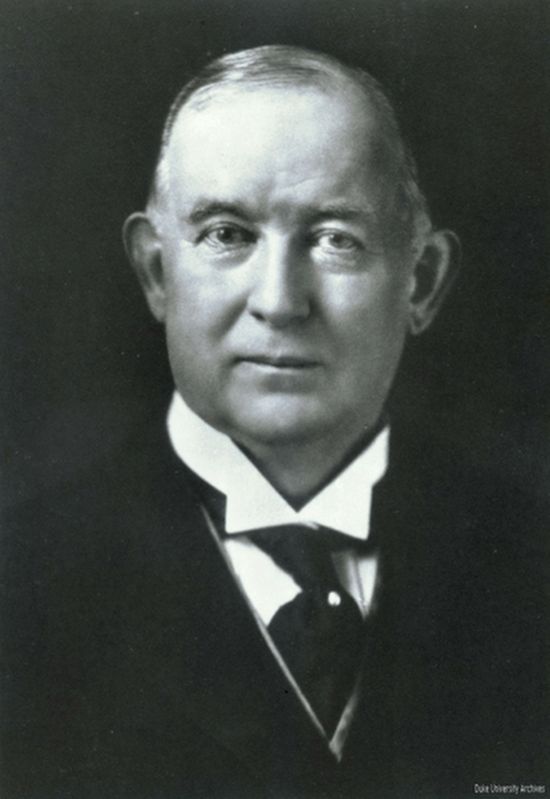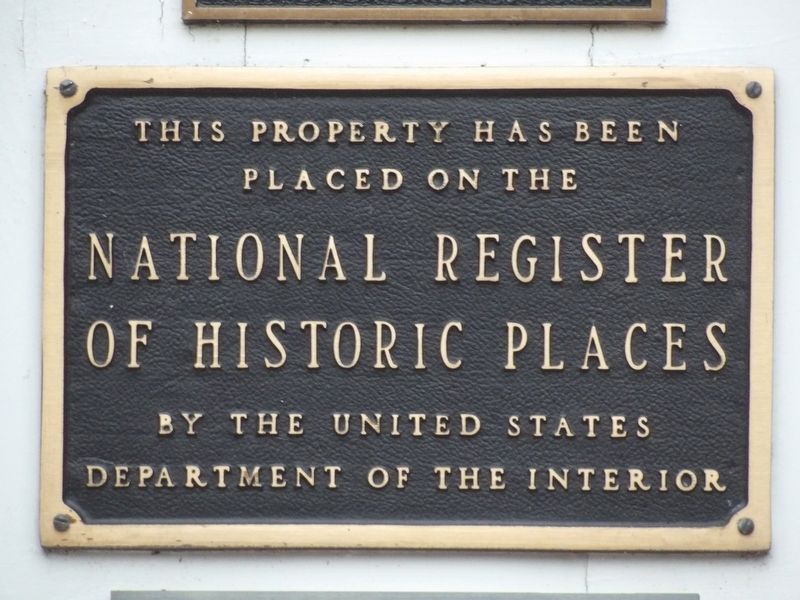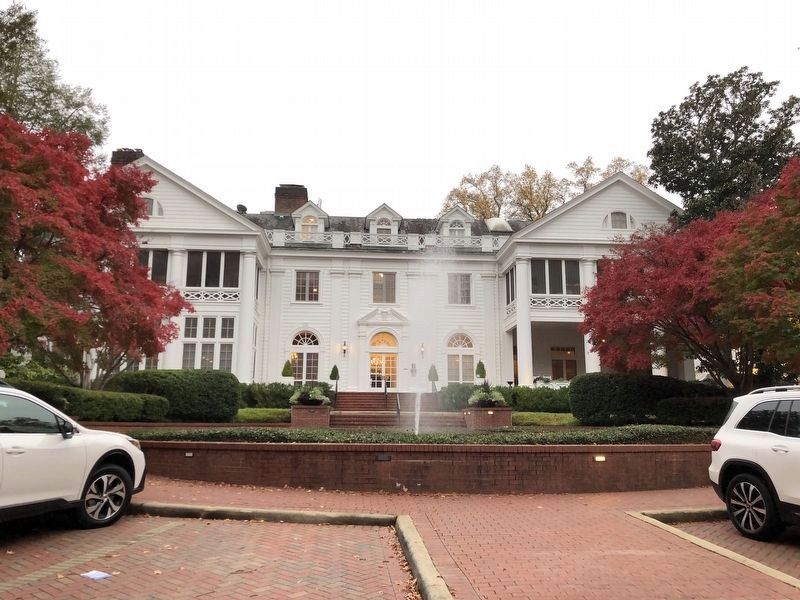Myers Park in Charlotte in Mecklenburg County, North Carolina — The American South (South Atlantic)
James Buchanan Duke House
placed on the
National Register
of Historic Places
by the United States
Department of the Interior
Topics and series. This historical marker is listed in these topic lists: Architecture • Industry & Commerce. In addition, it is included in the National Register of Historic Places series list.
Location. 35° 12.096′ N, 80° 49.651′ W. Marker is in Charlotte, North Carolina, in Mecklenburg County. It is in Myers Park. Marker can be reached from Hermitage Road north of Ardsley Road, on the left when traveling north. Touch for map. Marker is at or near this postal address: 400 Hermitage Rd, Charlotte NC 28207, United States of America. Touch for directions.
Other nearby markers. At least 8 other markers are within one mile of this marker, measured as the crow flies. Mary Duke Biddle Trent Semans (within shouting distance of this marker); Site of the First Court Held in Mecklenburg County (approx. 0.6 miles away); Cherry Neighborhood History (approx. 0.6 miles away); Mint Museum of Art (approx. 0.8 miles away); Thaddeus Lincoln Tate (approx. 0.9 miles away); Queens University of Charlotte (approx. one mile away); Harry Golden (approx. one mile away); Lewis Thompson and Pattie Clark Thompson (approx. 1.1 miles away). Touch for a list and map of all markers in Charlotte.
Regarding James Buchanan Duke House. Excerpt from the National Register nomination:
The James Buchanan Duke House is a handsome Colonial Revival mansion, important in the state's history for the economic and cultural contributions of its builder and later owners. Under Duke's guidance, architect Charles C. Hook enlarged the Z. V. Taylor house which Duke purchased into this elegant suburban mansion. This was Duke's residence during the last five years of his life during which he established the Duke Endowment — the philanthropic resource of Duke University and other North Carolina colleges which has also made important contributions to this state's health care facilities and the programs of the Methodist Church in North Carolina. After Duke's death the mansion was the residence of members of two of the most important textile families in North Carolina. For just over ten years it was the residence of M. L. Cannon whose family formed Cannon Mills. In 1957 the house became the residence of Mr. and Mrs. Henry Abel Lineberger; the Linebergers were also important in the North Carolina textile industry owning and operating a large number of companies throughout the Piedmont. Lineberger bequeathed the mansion to the Duke Endowment in which James B. Duke had concentrated much of his energy and fortune, to the benefit of the people of North Carolina
Also see . . .
James Buchanan Duke House (PDF). National Register nomination for the property, which was listed in 1978. (Prepared by Davyd F. Hood and Joe Mobley, North Carolina Division of Archives and History; via National Archives) (Submitted on December 11, 2023, by Duane and Tracy Marsteller of Murfreesboro, Tennessee.)

Duke University Libraries via Wikimedia Commons (Public Domain)
3. James Buchanan "Buck" Duke (1856-1925)
Through his American Tobacco Co., which he founded in 1890, he controlled the U.S. cigarette market until the federal government successfully broke the monopoly in 1911. He also founded an electric utility that eventually became the Duke Energy conglomerate. His last home was also known as Lynnwood and White Oaks.
Credits. This page was last revised on December 11, 2023. It was originally submitted on December 11, 2023, by Duane and Tracy Marsteller of Murfreesboro, Tennessee. This page has been viewed 64 times since then and 21 times this year. Photos: 1, 2, 3. submitted on December 11, 2023, by Duane and Tracy Marsteller of Murfreesboro, Tennessee.

